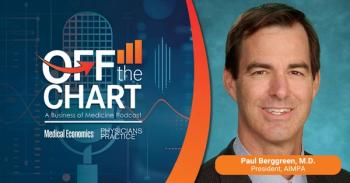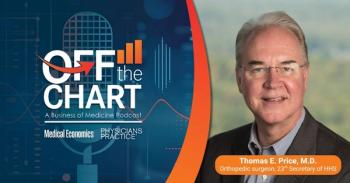
How Businesses Can Help Stem the Physician Shortage
Partnering with entrepreneurs gives physicians a diversified income stream and investment portfolio, while entrepreneurs gain critical insight and expertise.
In many areas, particularly smaller cities and communities, physician shortages are not looming, they are here.
We recently completed a comprehensive research study for clinical, diagnostic, and allied health services involving 116,000 permanent residents, and a geographically broader study involving over 200,000 residents. Using national standards for physician-to-population ratios, the results were not just surprising, they were startling. Here are the present day shortages:
• Neurologists – 78.3 percent
• Urologists – 76.2 percent
• Orthopedic Surgeons – 56 percent
• Primary-care Physicians – 55.5 percent (Family and Internal Medicine combined)
• Psychiatrists – 51.8 percent
• Cardiologists – 39.1 percent
• Deficiencies in four other specialties in excess of one specialist
• No ENT, Allergy & Immunology, Infectious Disease, or Rheumatology doctors at all
Deficiencies for the broader study covering hospital centered physician clusters within 10 miles were similar, verifying that the shortage is not localized.
This is before increasing insured access to physicians by about 10 percent of the U.S. population, representing serious public health concerns, at least for this community.
We can’t make doctors fast enough, nor can we force those doctors who decide the new system is unacceptable to them to continue to practice. We can mitigate the problem if Congress makes fixes that will keep medical practices from what a large majority of physicians warn is an epidemic of failed practices because they are losing money.
What we can do is support, embrace, and participate in the growth of new services and implementing new technologies that provide education, peer support, and create individual accountability to enable self-care, compliance, and reducing lifestyle based risks.
Institutional programs are arising, but they cannot have the reach and breadth to make a material difference without the growth of a new industry with roots in communities and adoption by providers.
Physicians partnering with entrepreneurs benefit both in two important ways: physicians gain a diversified income stream and investment portfolio and entrepreneurs gain critical insight and expertise that improve their chances of success considerably.
Here are two examples of entrepreneurs
Mark Dumoff, CEO – DocInsight, Wayne, N.J.: DocInsight has three services that are proven to benefit healthcare providers, insurers, and consumers alike by providing tools to improve quality, efficiency, and clinical outcomes while mitigating risk.
Its first service, PEARS, is a sophisticated qualitative and quantitative patient experience measurement system developed by experts as a constructive management tool.
The second is an innovative online personal preference system that matches doctors to patients and vice versa called “Finding Dr. Right,” which inherently improves patient/provider relations, improves outcomes, and mitigates risk.
The third, the MyHomeCare Plan, is the pioneer in fusing the latest science in patient literacy with data mining technology to create an on-demand, individualized care plan that includes the appropriate diet, self-care instructions, and even medications with pictures and frequency and an individualized provider directory to encourage and manage home care protocols.
Gary Gardner, CEO – Best of Health Tampa Bay, Tampa, Fla.: Best of Health Tampa Bay is a consumer-oriented Internet portal startup that will also serve to protect the reputation of physicians, dentists, and allied healthcare providers from subjective, and often manipulated, consumer “feedback.” Its goal is to provide the first comprehensive impartial, unprejudiced, fair and empirically determined rankings for physicians, dentists, and allied healthcare providers. Ranking categories include quality, service, clinical outcome, diagnostic and hospital utilization, credentials, record, and reputation among other categories, using publicly available third party records, blended into an overall rating. It will use the same information sources and evaluation metrics for all providers and will strictly disallow input that can be manipulated.
There are many more innovators and entrepreneurs who, if successful, will improve the delivery, efficiency and quality of healthcare, some dramatically. I will talk about them more in upcoming weeks.
Find out more about James Doulgeris and our other
Newsletter
Optimize your practice with the Physicians Practice newsletter, offering management pearls, leadership tips, and business strategies tailored for practice administrators and physicians of any specialty.









